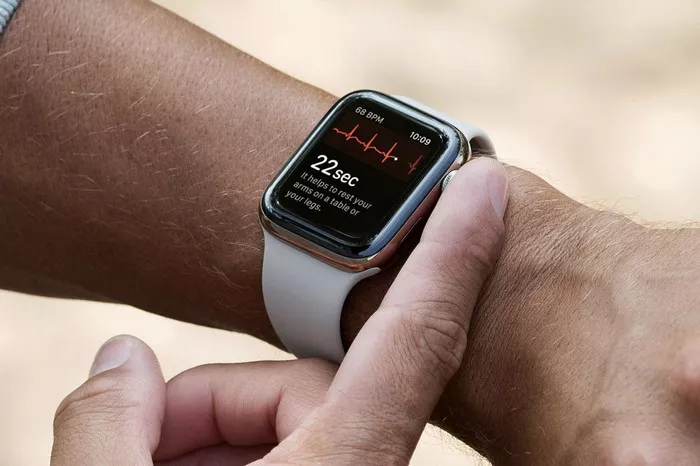The Apple Watch has become a staple in wearable technology, admired for its functionality and convenience. One of the key aspects users consider is the longevity of the battery. Understanding how long an Apple Watch battery lasts before needing replacement is crucial for maintaining optimal performance. This guide offers a detailed overview of Apple Watch battery life, factors that influence it, and practical advice for managing battery health.
Introduction to Apple Watch Battery Life
The battery life of an Apple Watch varies depending on several factors, including the model, usage patterns, and age of the device. Generally, Apple Watch batteries are designed to last around 18 hours on a single charge, depending on usage. This section explores the standard battery life expectations for different models and their typical performance.
Battery Longevity by Apple Watch Model
Apple Watch Series 1 and Series 2
Battery Life: Approximately 18 hours.
Battery Chemistry: Lithium-ion.
Replacement Interval: Typically every 2 to 3 years.
Apple Watch Series 3
Battery Life: Approximately 18 hours.
Battery Chemistry: Lithium-ion.
Replacement Interval: Typically every 2 to 3 years.
Apple Watch Series 4 and Series 5
Battery Life: Approximately 18 hours.
Battery Chemistry: Lithium-ion.
Replacement Interval: Typically every 2 to 3 years.
Apple Watch Series 6 and Series 7
Battery Life: Approximately 18 hours with additional features like faster charging.
Battery Chemistry: Lithium-ion.
Replacement Interval: Typically every 2 to 3 years.
Apple Watch Series 8 and Ultra
Battery Life: Up to 36 hours on a single charge, with Ultra models offering extended use.
Battery Chemistry: Lithium-ion.
Replacement Interval: Typically every 2 to 3 years, with the Ultra models potentially lasting longer due to enhanced battery management.
Factors Affecting Battery Life
Several factors influence how long an Apple Watch battery will last before needing replacement. Understanding these can help users maximize their device’s lifespan.
Usage Patterns
Heavy Usage: Frequent use of GPS, fitness tracking, and apps can drain the battery more quickly.
Normal Usage: Regular use of notifications, calls, and general activity results in average battery consumption.
Low Usage: Minimal use of features extends battery life but may affect performance.
Environmental Conditions
Temperature Extremes: Exposure to high temperatures or extreme cold can impact battery performance and longevity.
Humidity: High humidity levels may affect battery efficiency.
Software and Features
OS Updates: New software updates can influence battery performance due to added features and optimizations.
Background Apps: Running multiple background apps can consume more power.
Charging Habits
Regular Charging: Keeping the watch charged regularly helps maintain battery health.
Overcharging: While modern batteries are designed to handle overcharging, consistently charging beyond 100% may impact battery life over time.
See Also: How To Turn On Apple Watch For First Time
Signs That Battery Replacement is Needed
Recognizing when your Apple Watch battery needs replacement is crucial for maintaining performance. Common signs include:
Rapid Battery Drain: Noticeable decrease in battery life over a short period.
Inconsistent Performance: Battery percentage fluctuates unpredictably.
Physical Damage: Visible swelling or bulging of the battery.
Charging Issues: Difficulty in charging or maintaining a charge.
How to Extend Battery Life
To maximize the lifespan of your Apple Watch battery, consider the following tips:
Optimize Settings
Reduce Brightness: Lowering the screen brightness can conserve battery power.
Use Power Saving Mode: Activating Power Reserve mode when needed to extend battery life.
Disable Unnecessary Notifications: Reducing notifications and alerts can decrease battery usage.
Manage Apps and Features
Close Unused Apps: Ensure that apps not in use are closed to prevent background activity.
Limit GPS and Location Services: Use GPS and location services only when necessary.
Maintain Regular Charging
Charge Regularly: Avoid letting the battery completely drain before charging.
Use Apple’s Charger: Stick to Apple’s recommended charging accessories to ensure proper charging.
Battery Replacement Process
When it’s time for a battery replacement, follow these steps:
Checking Battery Health
Battery Health Feature: Apple Watch has a battery health feature in the settings to monitor battery performance.
Apple Authorized Service Provider
Service Options: Visit an Apple Store or an authorized service provider for battery replacement.
Warranty Coverage: Check if your watch is under warranty or AppleCare+ for potential coverage.
DIY Replacement Risks
Warranty Impact: Replacing the battery yourself may void any existing warranty.
Technical Skills: Requires specific tools and expertise to avoid damaging the watch.
Conclusion
The battery life of an Apple Watch typically lasts between 18 to 36 hours depending on the model and usage. With proper care and maintenance, users can expect their Apple Watch battery to function optimally for about 2 to 3 years before requiring replacement. Understanding the factors affecting battery life and recognizing signs of battery deterioration can help users make informed decisions about maintenance and replacement.

